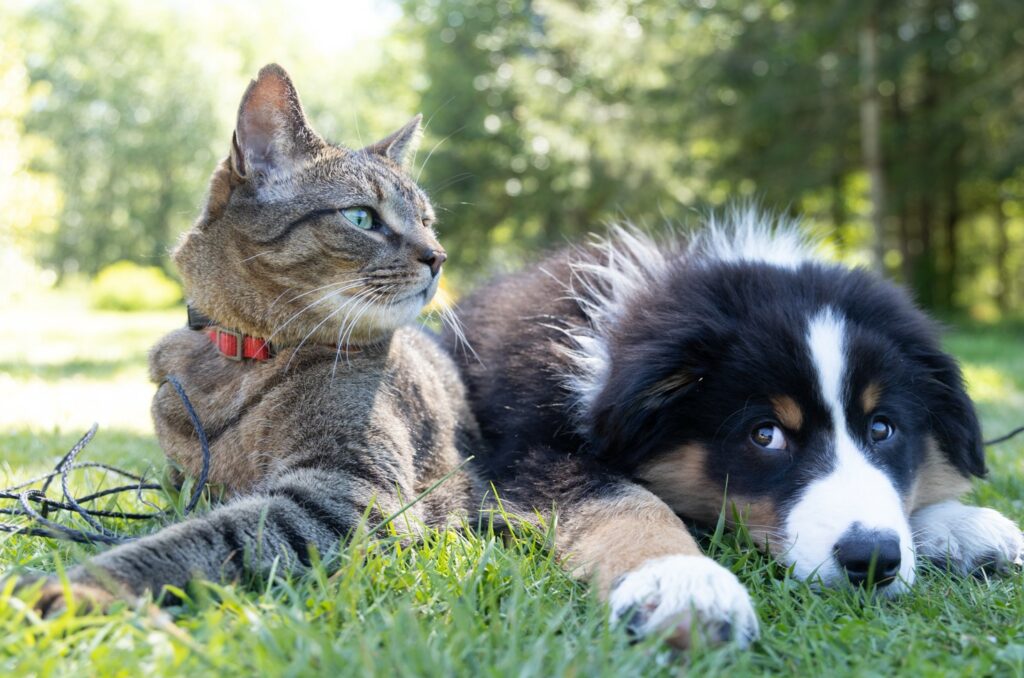We’ve all heard them – those age-old sayings and beliefs about our furry friends that get passed down through generations. But how many of these popular pet myths are actually true? Let’s set the record straight on some of the most common misconceptions about cats and dogs.

Myth #1: “A Dog’s Mouth is Cleaner Than a Human’s”
Despite what you might have heard, this isn’t true! Dogs’ mouths contain their own unique set of bacteria, different from humans but certainly not cleaner. They explore the world with their mouths and lick various things throughout the day, so it’s important to maintain good dental hygiene for your canine companion.
Myth #2: “Cats Always Land on Their Feet”
While cats do have an impressive righting reflex that helps them orient themselves during a fall, they don’t always land on their feet. Cats can and do get injured from falls, which is why it’s crucial to secure windows and high spaces in your home to prevent accidents.
Myth #3: “You Can’t Teach an Old Dog New Tricks”
Age is just a number! Older dogs are absolutely capable of learning new commands and behaviors. In fact, their maturity and attention span can sometimes make them even better students than puppies. It’s never too late to start training your four-legged friend.
Myth #4: “Cats Purr Only When They’re Happy”
While purring often indicates contentment, cats also purr when they’re stressed, in pain, or even while giving birth. It’s believed that purring can be self-soothing and might even have healing properties due to its specific frequency.
Myth #5: “Dogs See in Black and White”
Dogs actually can see colors, just not as vividly as humans do. They see primarily in blues and yellows, with difficulty distinguishing between red and green. Their vision is optimized for detecting movement and seeing well in dim light.
Myth #6: “Indoor Cats Don’t Need Vaccinations”
Even if your cat never ventures outdoors, they still need proper vaccinations. Viruses can be carried indoors on shoes, clothing, or other pets, making protection essential for all cats regardless of their lifestyle.
Myth #7: “A Wagging Tail Always Means a Happy Dog”
Tail wagging is simply a form of communication that can express various emotions. While it often indicates happiness, it can also signal anxiety, aggression, or nervous energy. It’s important to read your dog’s overall body language, not just their tail.
Myth #8: “Milk is Good for Cats”
Surprisingly, most adult cats are actually lactose intolerant! While they might love the taste of milk, it can cause digestive issues. Water is the best drink for your feline friend.
Myth #9: “Dogs Feel Guilty When They’ve Done Something Wrong”
That guilty look isn’t what you think! Dogs react to their owners’ disappointed or angry tone and body language rather than feeling actual guilt about their actions. The “guilty look” is more likely a submissive response to your reaction.
Myth #10: “Cats Are Completely Independent and Don’t Need Much Attention”
While cats might be more independent than dogs, they still need regular interaction, playtime, and affection. Many cats develop behavioral issues when left alone for too long without proper attention and enrichment.
Understanding the truth behind these common myths helps us become better pet parents and provide the best care for our furry family members. Remember, when in doubt about any aspect of pet care, it’s always best to consult with your veterinarian for professional advice.
Have you heard any other pet myths that need debunking? Share them with us in the comments below!